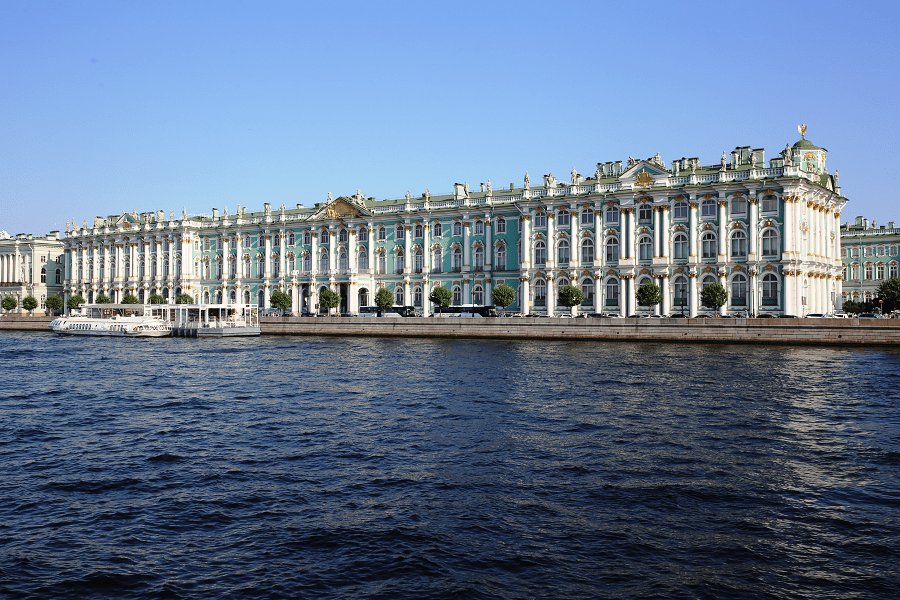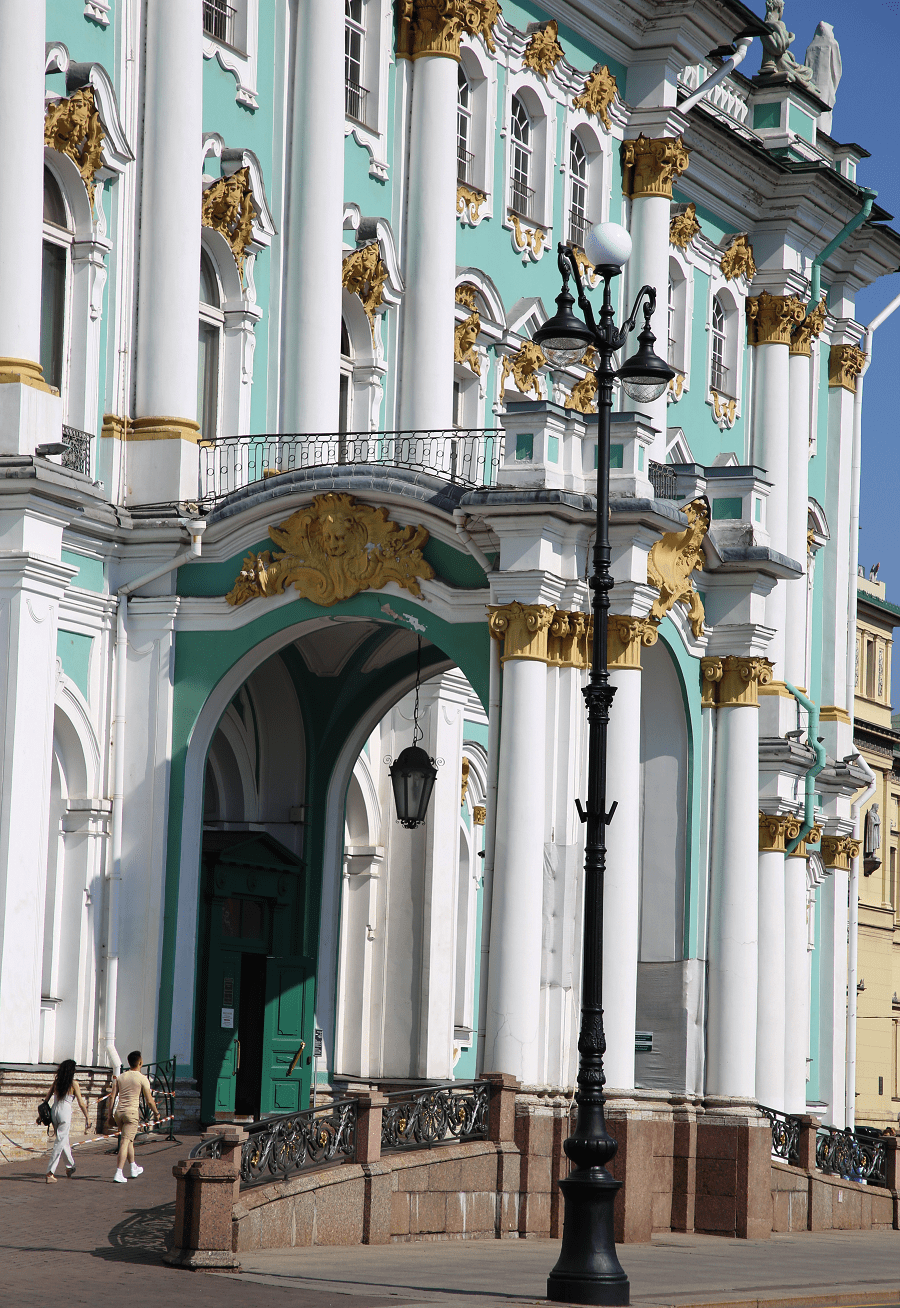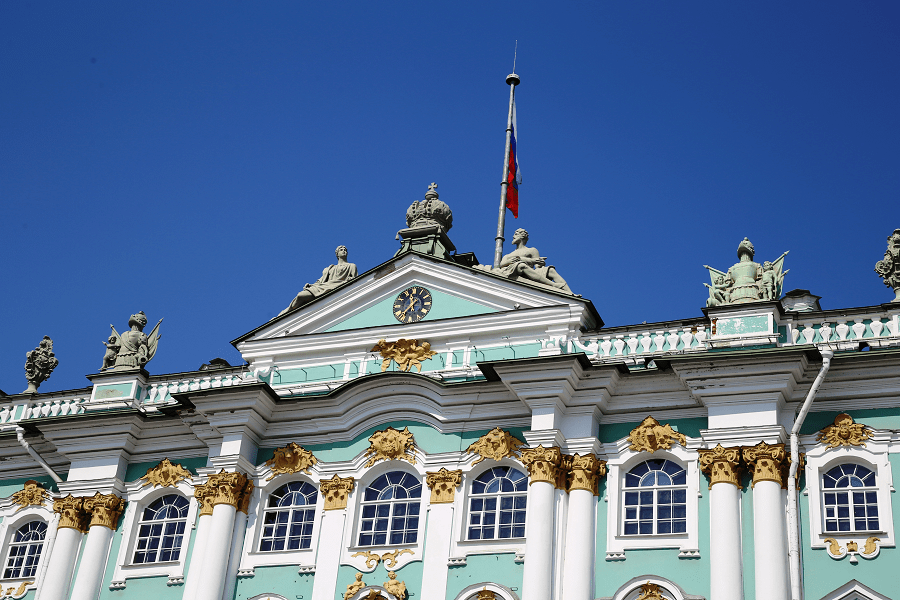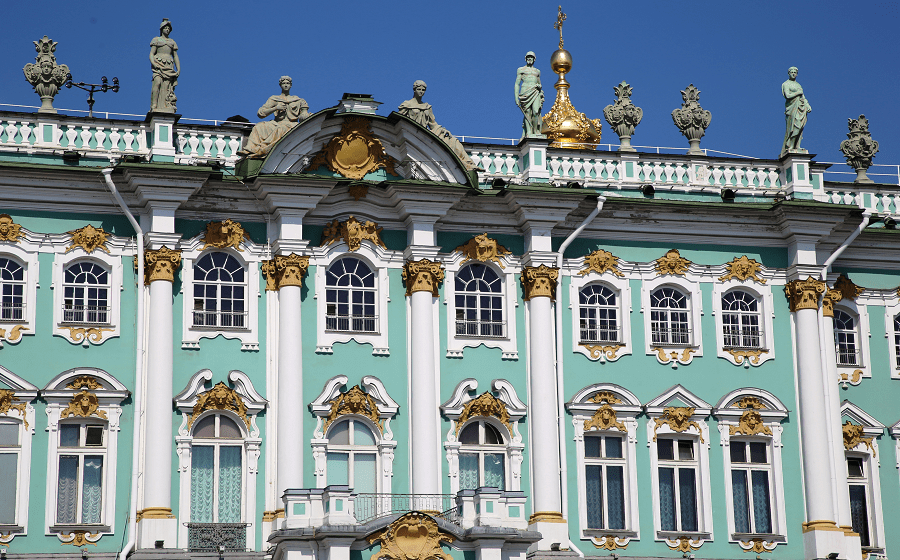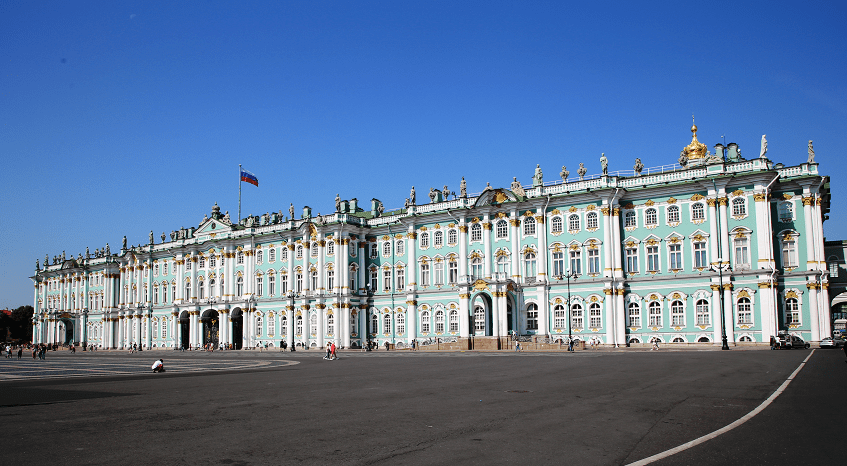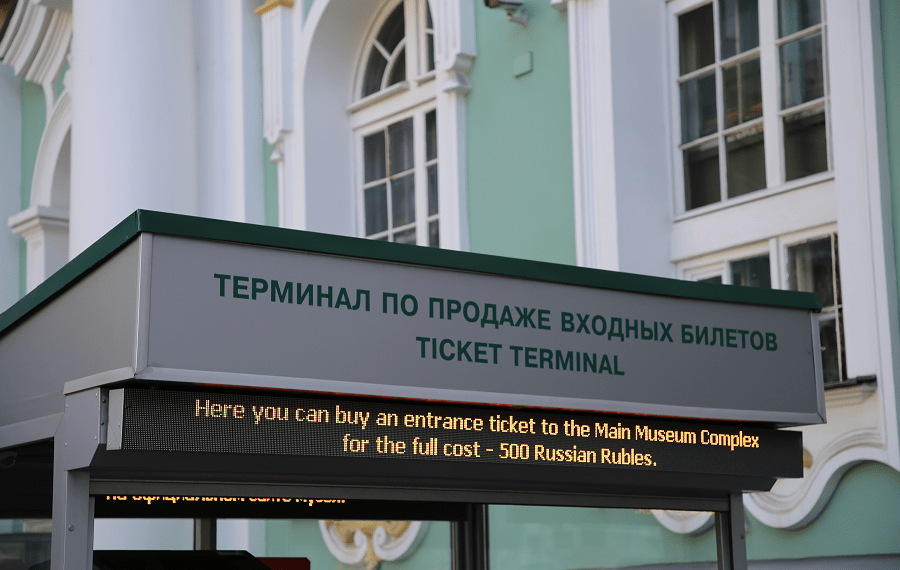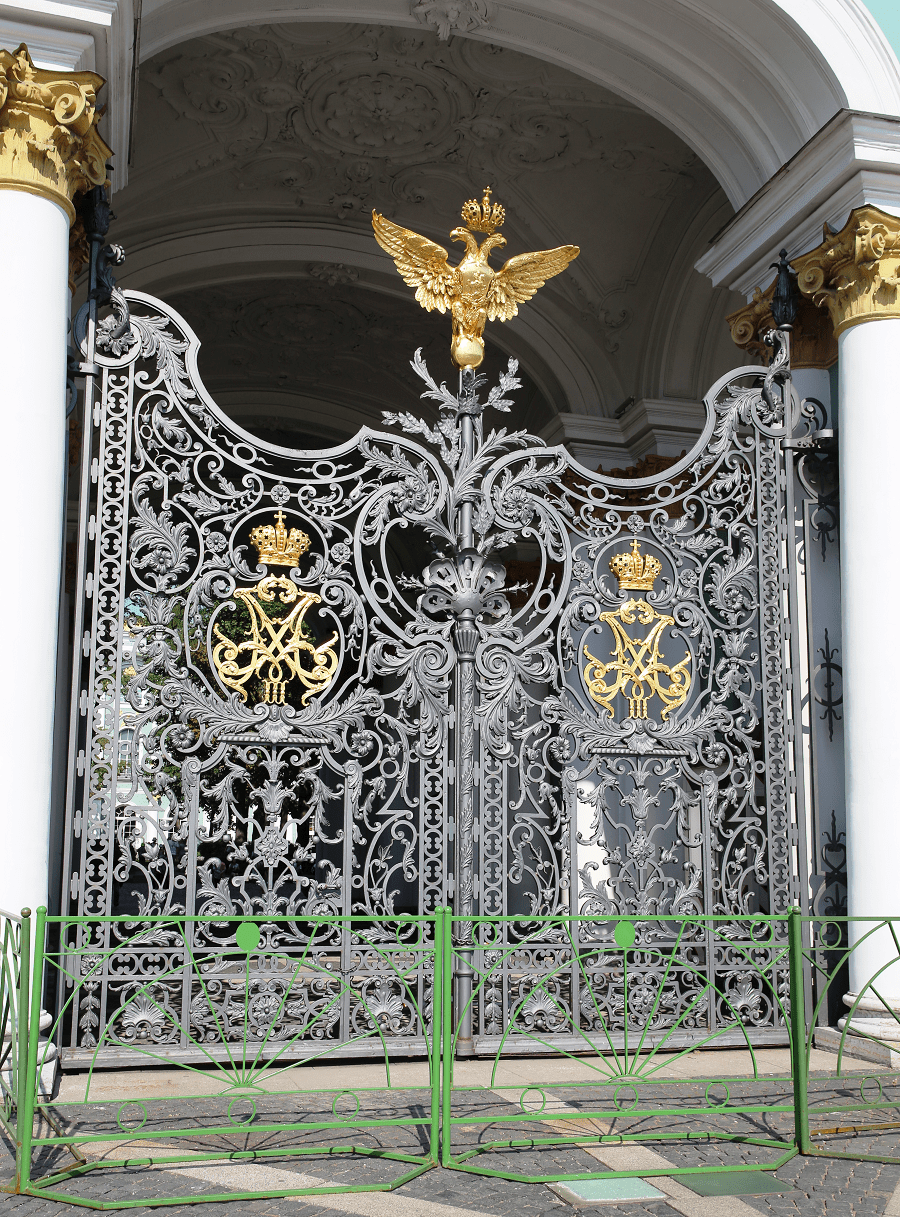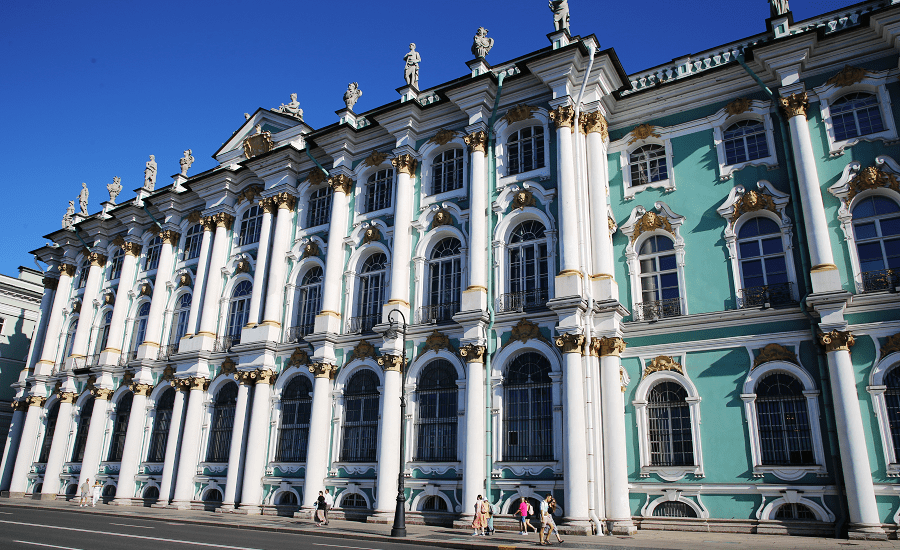The Winter Palace (in 1918-1943 – the Palace of Arts) is the main imperial palace of Russia, located at the address: St. Petersburg, Palace Square, 2 / Palace Embankment, 38.
The building of the palace (fifth) was built in 1754-1762 years by the Russian architect of Italian origin Bartolomeo Francesco Rastrelli in the style of lush Elizabethan baroque with elements of French rococo in the interiors. Since Soviet times, the main exposition of the State Hermitage has been located within the walls of the palace.
From the moment construction was completed in 1762 to 1904, it was used as the official winter residence of Russian emperors. In 1904, Nicholas II moved his permanent residence to the Alexander Palace in Tsarskoe Selo.
From October 1915 to November 1917, the Tsarevich Alexei Nikolayevich Hospital worked in the palace. From July to November 1917, the palace housed the Provisional Government. In January 1920, the State Museum of the Revolution was opened in the palace, which shared the building with the State Hermitage until 1941.
The Winter Palace and Palace Square form an architectural ensemble that has become one of the main objects of domestic and international tourism.
In 1844, Nicholas I issued a decree that established the maximum height of residential private buildings under construction in St. Petersburg – 11 sazhens (23.47 m). Thus, residential private buildings could not exceed the height of the Winter Palace, which was not directly mentioned in the decree.
This architectural phenomenon is known today as the “Skyline of St. Petersburg” – thanks to it, from the roof of any building in the historical center of the city, you can see almost the entire city.
The building of the palace has 1084 rooms, 1476 windows, 117 stairs (including secret ones). The length of the facade from the side of the Neva river is 210 meters, from the side of the Admiralty – 175 meters, the height is 23.5 meters.
Main halls
Jordan gallery is located on the first floor of the Winter Palace. The decoration is carried out in the style of Russian baroque. At first, the gallery was called the Main Gallery, since guests of the palace followed it from the Main Vestibule to the Main Staircase.
Big (Nikolaev) Hall. Hall No. 191. The large entrance hall was created by the architect G. Quarenghi in 1790 on the site of Rastrelli’s three central entrance halls.
Concert hall. Like the first ceremonial halls – the Anteroom and the Great Hall – the Concert Hall changed its appearance three times. Its name is explained by the fact that after the reconstruction of the end of the 18th century it was intended for concerts. Restored by architect V.P. Stasov after a fire in 1837.
The concert hall houses the Hermitage’s rich collection of Russian silver from the 17th to the early 20th centuries, especially the silver reliquary of Alexander Nevsky, made in 1746-51 at the St. Petersburg Mint (which is in the Peter and Paul Fortress). 1.5 tons of silver were spent on it.
The malachite drawing room was part of the private quarters of the wife of Nicholas I, Alexandra Feodorovna, as a front drawing room (1839, architect A.P. Bryullov). This is the only surviving example of malachite decoration of an entire residential interior. 125 pounds of malachite, purchased from the merchant Demidov and processed at the Peterhof Lapidary Factory, were used to decorate the hall.
Small (White) dining room. Hall No. 188. In 1894-1895, in connection with the marriage of Nicholas II and his move to the Winter Palace, a number of rooms in the northwestern risalit of the palace, which included the Small Dining Room adjacent to the Malachite Living Room, were remodeled under the general guidance of A. F. Krasovsky.
The small church had a gilded baroque decoration; a two-tiered iconostasis by V. Bobkov was installed in it.
Field Marshal’s Hall. Hall No. 193. The emergence of two new ceremonial halls (Field Marshal’s and Petrovsky’s) was part of Nicholas I’s plan to turn the Winter Palace into a historical monument of the imperial period of Russia’s development.
Petrovsky (Small Throne) Hall. Hall No. 194. Designed by O. Montferrand in 1833 (restored by V. Stasov after a fire). Dedicated to the memory of Peter I.
Armorial hall. Hall No. 195. Recreated by V.P. Stasov after the fire of 1837 for solemn ceremonies in the style of late Russian classicism.
Picket hall. Hall No. 196. Created in 1839 by V.P. Stasov to the south of the Armorial Hall in place of two small rooms and a staircase. Served for the separation of the military guard.
Georgievsky (Large Throne). Hall. No. 198. Created in 1787-1795 according to the project of Giacomo Quarenghi. At the direction of Emperor Nicholas I, when restoring the hall after a fire in 1837, architects V.P. Stasov and N.E. Efimov used white Carrara marble, the finished parts of which were delivered from Italy.
Golden living room. Hall No. 304. The Golden Living Room was designed by A. P. Bryullov in 1841 for the wedding of the heir and Grand Duchess (later Empress) Maria Alexandrovna, modeled as the Throne Hall of the residence of the Electors in Munich. All walls and pylons are covered with fine ornaments and completely gilded.
Hermitage Museum
The State Hermitage Museum is a museum of art and culture. It is the largest art museum in the world by gallery space. It was founded in 1764 when Empress Catherine the Great acquired an impressive collection of paintings from the Berlin merchant Johann Ernst Gotzkowsky. The museum celebrates the anniversary of its founding each year on 7 December, Saint Catherine’s Day. It has been open to the public since 1852. The Art Newspaper ranked the museum 6th in their list of the most visited art museums, with 1,649,443 visitors in 2021.
Its collections, of which only a small part is on permanent display, comprise over three million items (the numismatic collection accounts for about one-third of them). The collections occupy a large complex of six historic buildings along Palace Embankment, including the Winter Palace, a former residence of Russian emperors. Apart from them, the Menshikov Palace, Museum of Porcelain, Storage Facility at Staraya Derevnya, and the eastern wing of the General Staff Building are also part of the museum. The museum has several exhibition centers abroad.
Of the six buildings in the main museum complex, five—namely the Winter Palace, Small Hermitage, Old Hermitage, New Hermitage, and Hermitage Theatre—are all open to the public.
How to get to?
Address: Palace Embankment, 32
Metro: Admiralteyskaya
Buses: Dvortsovaya Ploshad – routes 7, 10, 24, 191
Trolleys: Dvortsovaya Ploshad – routes 1, 7, 10, 11
Minibuses: Dvortsovaya Ploshad – route K-252.
Opening hours of the Hermitage
Wednesday, Thursday, Sunday: 11:00 – 18:00. Last session: 16:00.
Tuesday, Friday, Saturday: 11:00 – 20:00. Last session: 18:00.
We recommend arriving at the Hermitage well in advance. We warn you that on weekends and holidays, in the summer, on New Year and Christmas holidays, City Day and other holidays during the opening hours of the Hermitage there can be a huge influx of visitors.
Therefore, on such days it is recommended to arrive not during the opening hours of the Hermitage, but earlier – half an hour before its opening. After all, you can stand in line for several hours, and not even get into the Museum.
The visit is carried out according to the routes developed by the museum according to the sessions:
Route No. 1 along the Main Museum Complex (entrance from the Jordan Stairs). When choosing this route, you will first of all have access to the State Halls of the Winter Palace, as well as the expositions of the Old and New Hermitage. This route should be chosen if you want to focus on visiting Western European fine art and the Hermitage art gallery, as well as get acquainted with the antique collections of the museum.
Route No. 2 along the Main Museum Complex (entrance from the Church Stairs). When choosing this route, the halls of the Winter Palace will be available for visiting first of all: palace interiors and living quarters of the imperial family, permanent exhibitions of Russian culture and the countries of the East, as well as English and French art. In the halls located on the third floor of the Winter Palace, the art of the East is presented in all its diversity. Here you can get acquainted with the archaeological monuments presented at the exposition “Culture and Art of Central Asia” – about a thousand exhibits from various regions of Central Asia – East Turkestan, Khara-Khoto, Dunhuang, Tibet and Mongolia. Adjacent halls feature art from Byzantium, the Middle East, and the Ottoman Empire. On the third floor of the Winter Palace, you can visit the Gallery of the Numismatics Department. In the second part of the route, visitors will be able to get acquainted with part of the ceremonial halls of the Winter Palace (from the Armorial Hall) and with the Picture Gallery and Ancient Art.
The duration of one session is 2 hours. We recommend arriving at the entrance to the museum 15 minutes before the start of the session. Access to the exposition must be made no later than 30 minutes after the start of the session, after this time the ticket is canceled and non-refundable.
Entrance ticket to the Main Museum Complex starts from 500 rubles. The ticket is valid for the selected session and itinerary only on the day of the visit.



